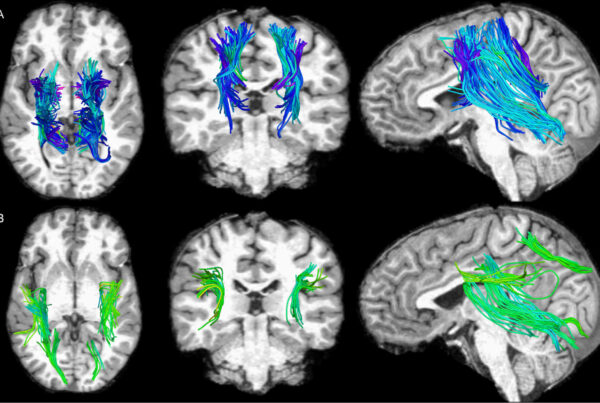When a patient is diagnosed with Alzheimer’s or dementia, the individual and their family must make difficult decisions about their care and financial planning. For policymakers and stakeholders, understanding how a disease impacts diverse populations is important for ensuring resources are allocated equitably.
A new USC study finds that following a dementia diagnosis, Hispanic, Asian and Black patients survived significantly longer than white patients. The study is the first to analyze racial and ethnic disparities in survival time following dementia diagnosis across large samples that are broadly representative of different racial and ethnic groups in the U.S. population.
“Given that there is no cure and there are very limited treatments, it is important to understand how this disease burdens communities differently,” said Julie Zissimopoulos, co-director of the Aging and Cognition program at the USC Schaeffer Center for Health Policy & Economics and associate professor of economics and gerontology at the Price School of Public Policy and Leonard Davis School of Gerontology.
Large dataset helps reveal systemic explanations
The researchers leveraged a database of 100% traditional Medicare claims over an 18-year period, from 2001 to 2018. They identified about 700,000 Medicare beneficiaries with a dementia diagnosis in 2001 and followed them until death. In total, there were over 8 million beneficiaries with a dementia diagnosis during the study period.
The researchers find Hispanic patients survived 6.2 years, on average, after a dementia diagnosis. In comparison, Asian/Pacific Islanders survived 5.5 years after diagnosis, Black patients survived 3.8 years and white patients survived 3.5 years.
“While other studies have documented racial/ethnic differences in mortality from dementia diagnosis in small and/or regional samples, the size of that difference varied considerably. Our study confirms that Asians, Blacks and Hispanics live longer after a dementia diagnosis than non-Hispanic whites, but there are no differences for American Indians and Alaska Natives,” said Yi Chen, a Ph.D. candidate at the USC Price School of Public Policy.
To parse out why these disparities might exist, Chen and her colleagues examined the impact of socioeconomic status and geography on mortality risk. To assess whether having a lower income affected survival differentially across race/ethnicity, the researchers analyzed data for beneficiaries eligible for both Medicare and Medicaid. Notably, the difference in survival was either stable or increased across all races/ethnicities in the low-income subgroup.
“Our findings suggest racial and ethnic minorities, who may already be disadvantaged in terms of income and resources available at older ages, may have to stretch those resources to cover the dementia care needed for many years, as many as 14 more years for 10% of Hispanics and 10% of Asians” explained Chen.
They also assessed whether there were differences across urban vs rural areas and across states. They found living in rural or urban areas did not differentially affect survival. But there were large differences in survival outcomes within racial/ethnic groups across states. For example, Black beneficiaries living in New York had a lower risk of death after five years compared to Blacks in California, while those living in Georgia faced an elevated risk of death.
“Explanations of racial and ethnic differences in survival have largely focused on individual health behaviors,” said Zissimopoulos. “The disparities by the state that the study highlighted point to contextual factors such as state health policies, access to and supply of physicians and dementia specialists, diagnostic practice, and other institutional factors that shape health and mortality.”
Resources are needed
These findings have significant implications for providing and financing care for these patients. If individuals cannot be cared for at home, costs associated with assisted living facilities can quickly add up. Furthermore, this study reinforces the need for diverse populations in clinical trials.
“Unfortunately, these additional years that Hispanic and Asian patients are living are not, on average, years in good health,” said Eileen Crimmins, University Professor and AARP Chair in Gerontology at the USC Leonard Davis School and senior fellow at the USC Schaeffer Center. “An additional year in an Alzheimer’s care facility can cost $50,000 to $100,000.”
Ensuring the healthcare system is robust enough to provide care for the growing population of older adults with Alzheimer’s or dementia requires policymakers, payers and health systems to recognize these disparities.
Patricia Ferido, senior research programmer at the USC Schaeffer Center, also authored this study. This study was funded by grants R01AG055401 and P30AG066589 from the National Institutes of Health.





